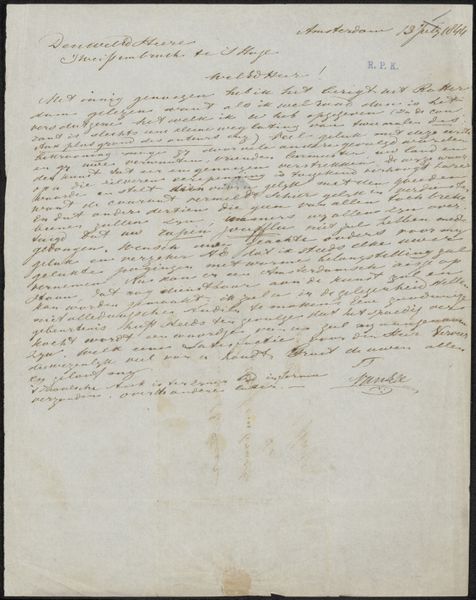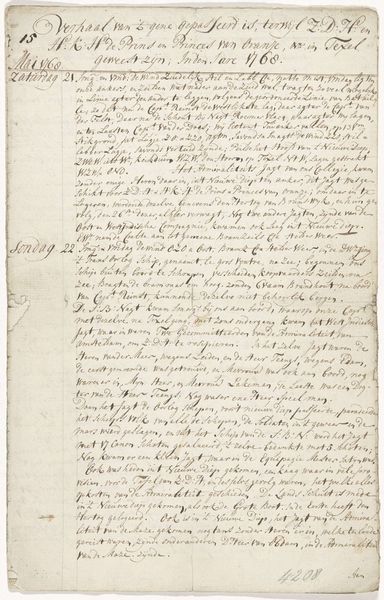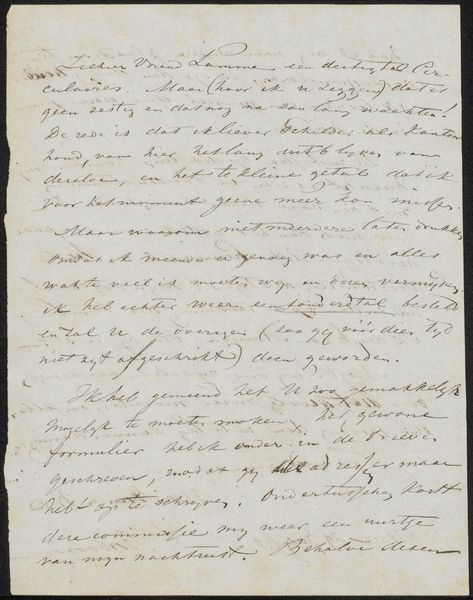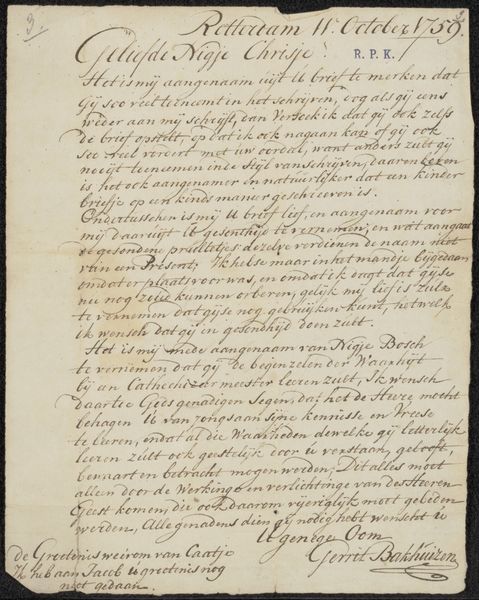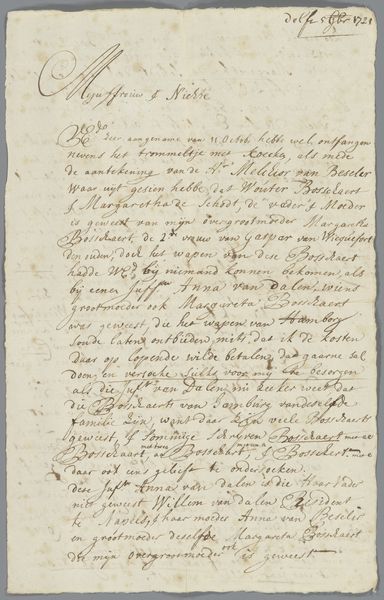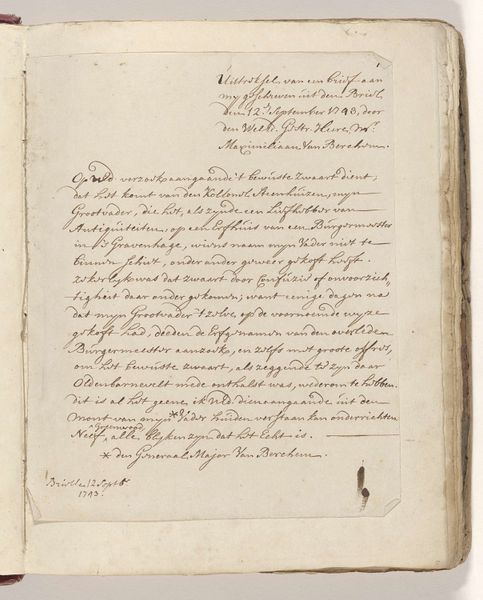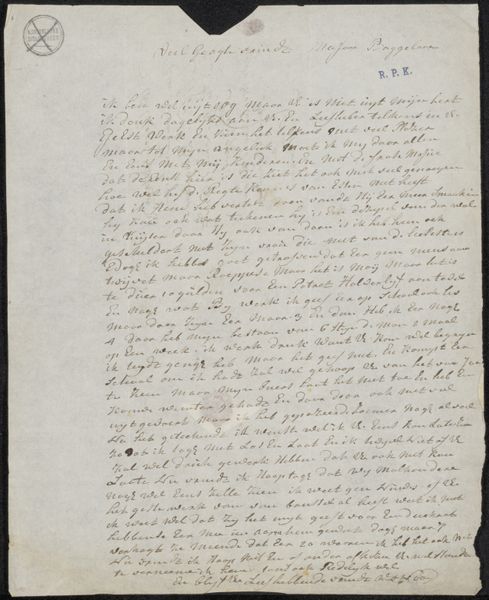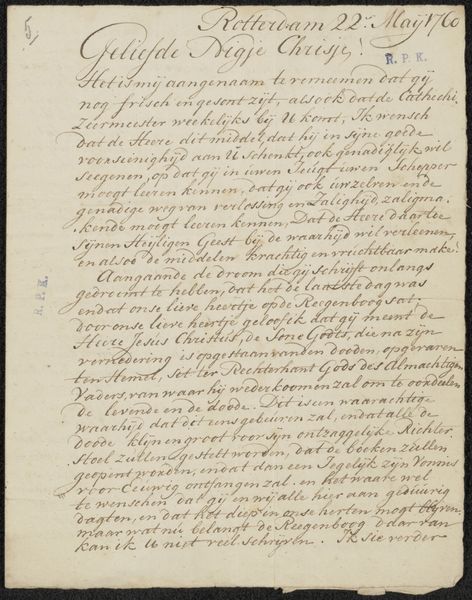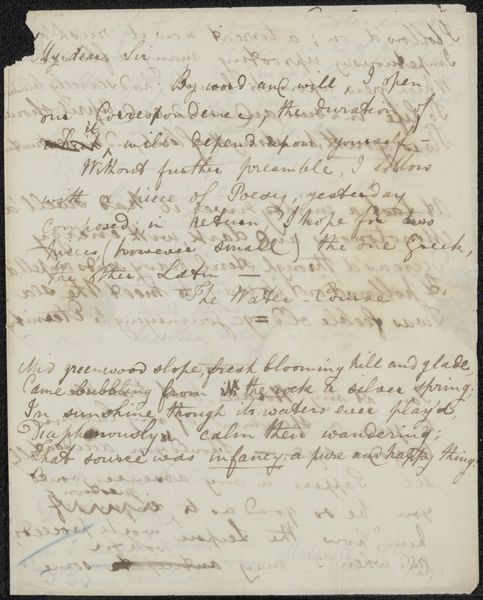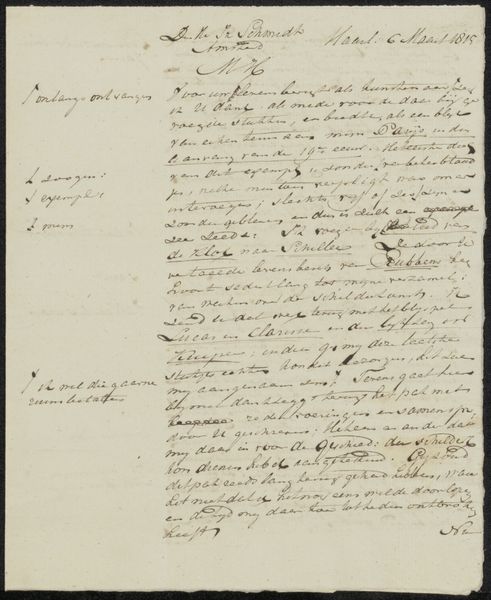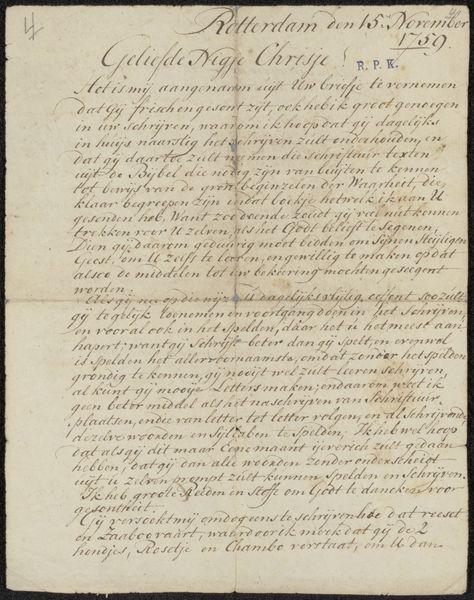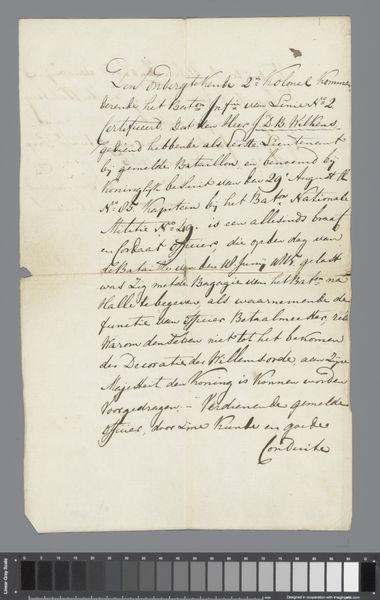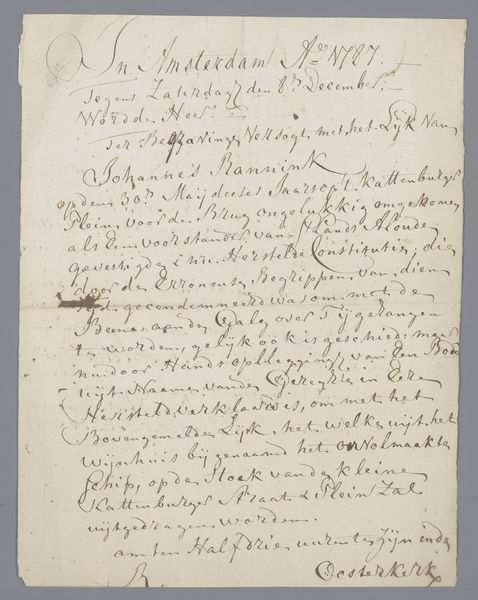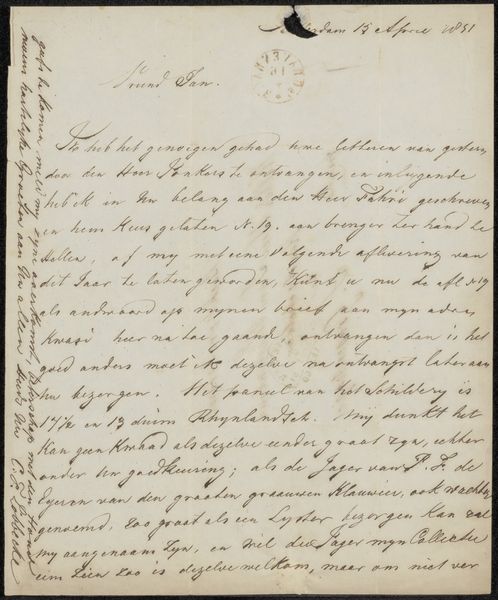
drawing, paper, ink
#
drawing
#
narrative-art
#
dutch-golden-age
#
paper
#
ink
#
history-painting
Copyright: Rijks Museum: Open Domain
Editor: This intriguing document is titled "Testament van Gerard ter Borch (II)," possibly created between 1681 and 1686 by Gerard ter Borch II. It's a drawing in ink on paper, currently housed in the Rijksmuseum. At first glance, it looks like a historical manuscript. How do you interpret this work, and what might it tell us about the artist or the period? Curator: This drawing gives us an intimate glimpse into the legal and social structures of the Dutch Golden Age, far beyond the idealized portraits and genre scenes Ter Borch is known for. A will isn't just a list of possessions; it's a statement about legacy, family relationships, and the patriarchal framework within which Ter Borch operated. Editor: That's interesting. I hadn't considered the gendered implications. Could you expand on that? Curator: Wills in this period were often tools to maintain control within families, solidifying male inheritance and power. The drawing itself—the act of meticulously writing and documenting this testament—speaks to a desire for order and control. How might this reflect broader societal anxieties and power dynamics? Editor: So, you’re suggesting the drawing acts as a physical manifestation of societal norms and power structures. I guess I was just seeing it as an old document, but now I see it can be interpreted as an art piece with layers of meaning embedded in its creation and content. Curator: Exactly. By analyzing the historical context and considering Ter Borch's position within it, this seemingly simple document becomes a powerful lens through which we can examine questions of gender, class, and power in 17th-century Netherlands. Editor: This definitely offers a fresh perspective and provides much food for thought on how we approach similar pieces in the future. Curator: Indeed, this exploration exemplifies the importance of considering artwork in its broader historical and social contexts, ensuring a deeper appreciation.
Comments
No comments
Be the first to comment and join the conversation on the ultimate creative platform.
